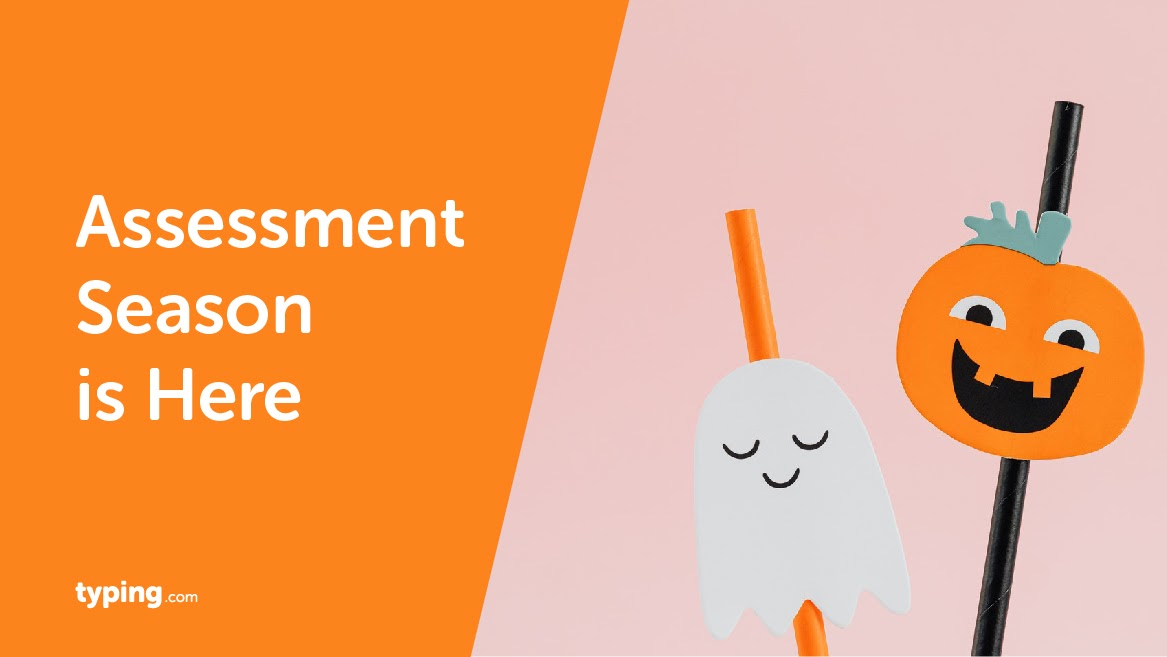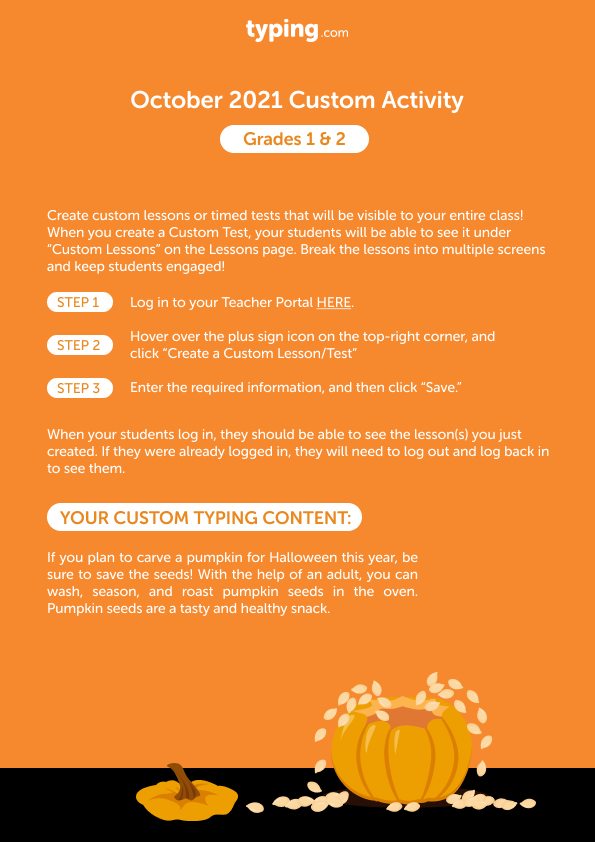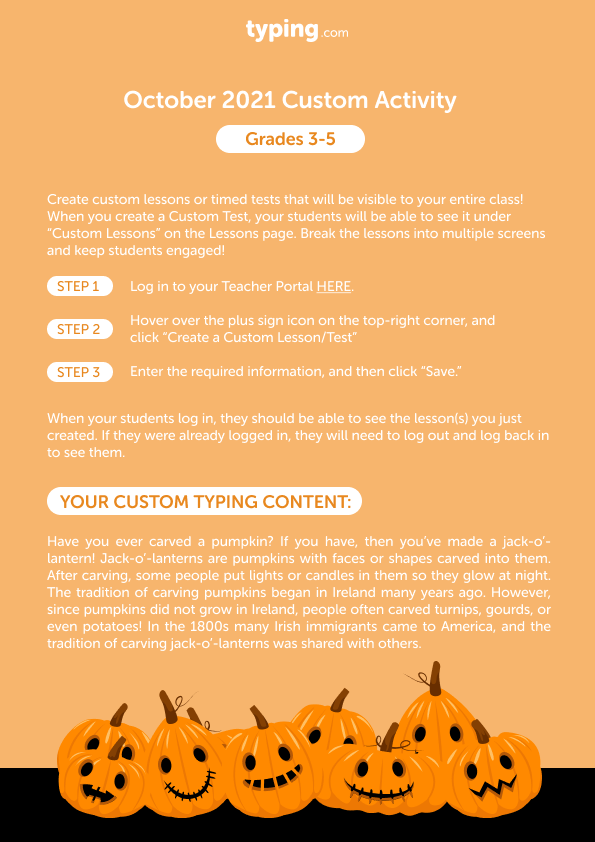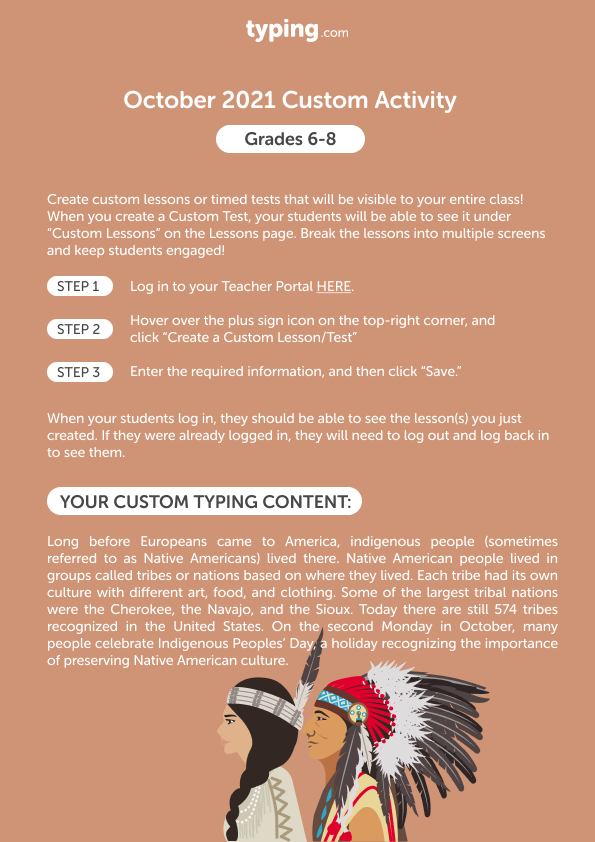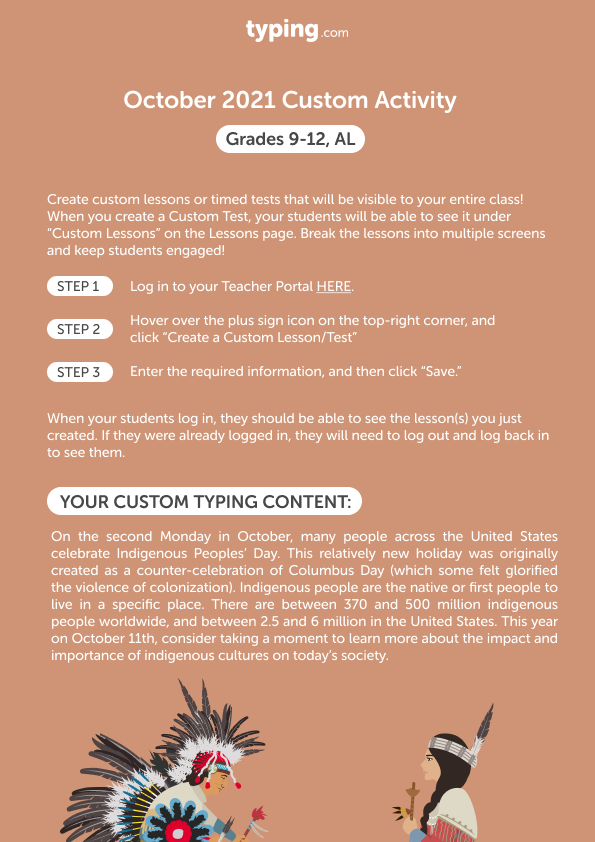Using Assessments in Edtech—Plus, Free Activities!
Teachers recognize that assessments are a critical part of identifying baseline skills and progress over time. In fact, assessments are an important part of the entire learning process. Without them, educators are simply providing new information to students without having a clear understanding of when, how, or if that new information is actually being retained.
That’s why edtech assessments should be given both on a regular basis and in a variety of formats so that all students in your class have the opportunity to showcase their learning in a way that feels most comfortable to them. Nowadays, assessments go way beyond the pencil and paper tests that used to take place at the end of every unit. There are many fun and unique ways you can assess students in your edtech classroom. And your students don’t even have to know they’re being assessed in the first place. Read on to get ideas to implement assessments and find free custom typing activities for your classroom!
Formative vs. Summative Assessments
To get started, it’s important to be mindful of the similarities and differences of formative vs summative assessments.
Formative assessments are those that take place during the learning process, while summative assessments take place after learning has occurred. In other words, formative assessments take place often, most likely on a daily basis, while summative assessments take place much less frequently.
- Are quick check-ins to assess student learning while it’s taking place
- Can be completed in a variety of formats
- Are used to see what information needs to be retaught in a new way
- Show the teacher which students are ready to move forward and which students need more practice
- Determine what activities will take place next
- Can be informal and do not need to be scored
- Are sometimes recorded in the grade book
- Are longer, more formal assessments that take place after a set instructional period
- Can be completed in a variety of formats
- Are used to see what information has been retained and which skills have been developed
- They help the teacher evaluate their current teaching strategies and the curriculum being used
- Determine if students are meeting grade-level standards
- Are typically scored or graded
When it comes to formative versus summative assessments, the key is to remember that they’re both invaluable tools that you can use to gauge student learning in your classroom and to evaluate the teaching strategies you’re currently using.
Formative Assessment Examples
Because formative assessments are considered to be the more informal assessments in education, you can sprinkle them into each and every lesson that you teach. And when it comes to creating formative assessments, your options really are endless.
Student assessments don’t have to be boring. There are plenty of classroom activities that offer instant feedback on student progress. Here are 10 formative assessment tools you can start using in your edtech classroom today to measure:
- Administer classroom polls
- Give a partner quiz
- Write a summary
- Draw a picture
- Create a video
- Fill in a diagram
- Use a Google form
- Answer questions on an interactive whiteboard
- Ask groups to answer a certain question or teach a certain topic to the class
- Use printable exit tickets
Formative assessment strategies are as unique as every teacher. What really matters is that you commit to including formative assessments in your lesson plans on a regular basis—no matter which grade level you’re currently teaching.
Summative Assessment Examples
Even though summative assessments are considered to be the more formal assessments in education, you can still flex your creative muscles when creating assessments for your students.
Here are 10 summative assessment examples in the edtech classroom for the assessment process:
- Administer paper or online tests
- Build portfolios
- Design multimedia projects
- Assign digital book reports
- Have students write essays
- Give Socratic seminars
- Use physical models
- Present on scientific experiments
- Create and maintain a class blog
- Create a class website
Summative assessments aren’t limited to traditional tests. By getting creative and varying the format, summative assessments can be fun and engaging for your students. There are tons of fun ways your students can demonstrate skills through summative assessments.
STEM Assessments
STEM assessments, in particular, lend themselves to students being actively engaged in the entire learning process. And what better way to do that than to create STEM assessments that are completely hands-on.
From building rockets to solar pizza ovens, balloon cars, and sand volcanoes, STEM lessons are all about having fun while also learning. And STEM assessments should certainly be no different.
Some of the best assessments in an edtech classroom have students working collaboratively in groups to explore, create, and design or by having a classroom competition. So when you set up science experiments, arrange classroom typing competitions, or design building challenges, your students are sure to jump right in and show you exactly what they’re learning in your class.
A great way to explore all of the incredible ways science, technology, engineering, and mathematics influence our daily lives is to create assessments around some of the upcoming events or holidays in your area.
For example, let’s say you have an engineering unit coming up and you want to incorporate an activity where students design blueprints for their own house, building, or bridge and then actually build their structure as a summative assessment.
Knowing that Halloween is just around the corner, why not get them even more excited about the project by having them design and build a haunted house, a spooky building, or a creepy bridge? Or, if your goal this month is to increase your student’s typing speed and accuracy scores, why not set up an all-class challenge where students set personal goals and earn rewards for putting forth their best effort on Halloween-themed typing activities? Check out our free, October-themed custom lessons for your classroom below!
No matter what grade level you teach, you can introduce your project or challenge with some simple yet fun Halloween coloring pages, Halloween printouts, Halloween games printables, Halloween flashcards, or even Halloween songs. And while you’re at it, you can also set up Halloween message boards for each of your classes so students can ask questions and leave responses to the formative assessments you create.
Typing.com integrates both formative and summative assessments directly into each grade-level progression. In every unit, students will complete a personalized practice lesson targeting their individual problem keys. This lesson allows both students and teachers to identify which keys need more practice prior to the summative assessment at the end of each unit. Summative assessments are typically between one to three minutes long, and students will type as many words as they can within that time frame. Additionally, starting in fourth grade, students will practice meeting the Common Core State Standard of typing one page in a single sitting by answering free-response questions in the creative writing unit. These responses will be sent directly to the teacher for review once they are complete.
Teachers also have the option to create their own custom typing tests if there are specific skills they want to assess. By creating a custom typing test, teachers can create their own content and decide whether they want the assessment to be one, two, three, or five minutes in length. Once students have completed this custom typing test, teachers will be able to see each student’s accuracy, speed, and how many times they attempted this assessment.
Custom Typing Activities for Teachers
Give your students cross-curricular instruction while helping them practice speed and accuracy with new, customized lessons for Grades 1-12!

